Propex vs Espar vs Webasto Heaters For A Camper Van Conversion
#vanlife during winter can range from a cozy ski home base to a downright miserable experience depending on how functional your build is. If you’re planning on living in the North, or at high altitude year-round, then getting a heater installed in your campervan conversion expands your versatility and comfort. This is especially true with a well-insulated van to hold the heat in.
In this post we’re going to discuss the differences between the Propex Propane Heater, Espar Diesel Heater, and Webasto Diesel & Gas heaters.
When it comes to heating your van, these heaters are top of the line. That means they have a high price tag and require an extensive install. If you’re not up to the process, read our post on vanlife heating solutions where we discuss more cost effective ways to heat your van in winter.
If you want something energy efficient that can run the entire night in the coldest of temperatures – continue reading!
- 24hrs. on 1 Gal.
- Nighttime noise mode
- Good Temperature Control & Diagnostics
How Do Propex, Espar And Webasto Air Heaters Work?
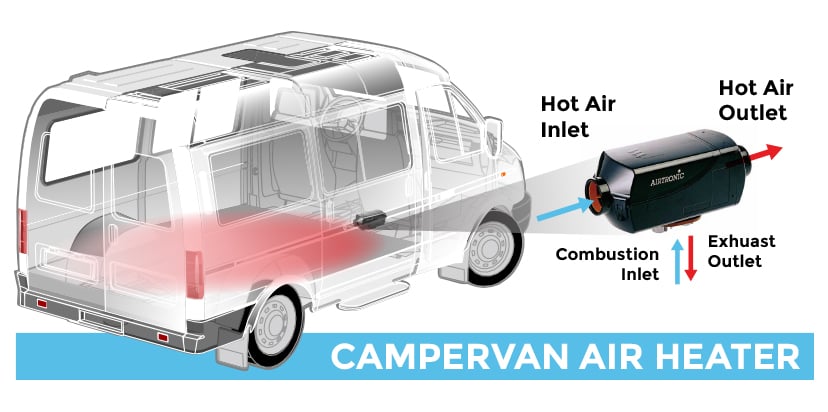
Air heaters are installed either inside the vehicle (on the floor) or mounted underneath the vehicle chassis.
- First, the heater will draw fresh outside air through an air intake
- An internal combustion process heats up coils called a heat exchanger
- As the heater blows the fresh air through the coils, the air heats up
- Finally, warm air is blown throughout the cabin of the vehicle
In short, these heaters – Propex, Espar and Webasto – share the same basic install requirements:
- Fresh air intake
- Air exhaust (for the combustion fumes)
- Connection to your fuel source (propane, diesel, or gas)
- 12V source to power the device
Safety
The heaters we’re discussing here are externally sealed and the combustion takes place outside of the vehicle cabin. That means unlike a portable Mr. Buddy Heater or a Camco, you do not need to leave the windows open for proper ventilation.
As long as they are installed properly, these heaters can be run 24/7 without worry about fumes or oxygen depletion. Any van build should still have a good carbon monoxide detector, but these heaters will function more like a traditional furnace.
Benefits Of A Built-In Heater
Because these heaters are tapping into larger fuel sources, they are cheaper to run and more autonomous than portable heaters. You don’t have to keep buying disposable 1lb. cylinders and they can run longer than portable heaters without needing to be refilled.
These heater options all have a combustion process separate from the hot air, meaning there is no moisture build up inside the van from the heater.
Generally, these heaters take up less usable internal space in a van build. They are installed out of the way and you don’t have to worry about being as cautious around hot surfaces like you’d find with a fireplace or portable heater.
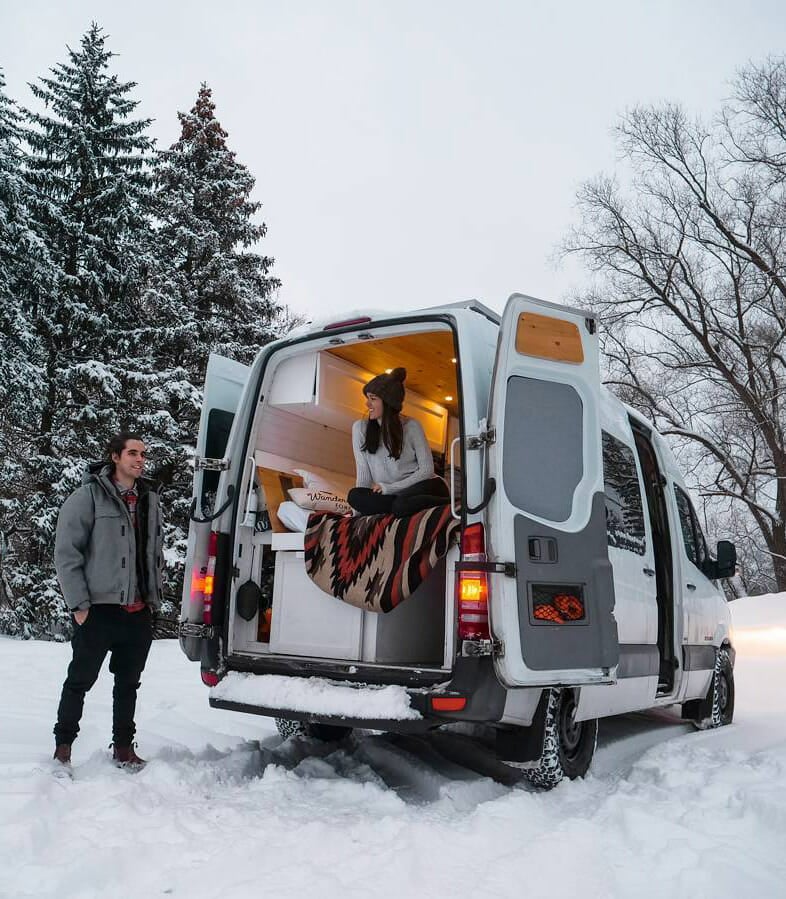
Propex Propane Heater
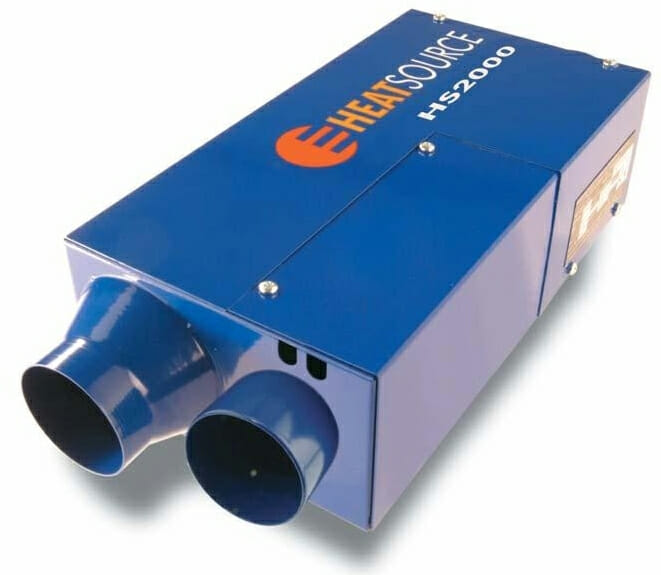
The Propex heater is the most readily available of the three. Running a propane heater has several distinct advantages compared to the gas or diesel options:
For one, propane is a cleaner fuel than both diesel and gasoline. It produces less CO2, Carbon Monoxide, Nitrogen Oxide, hydrocarbon and particulate emissions. While the Espar and Webasto require you to perform yearly maintenance to clean out carbon buildup, the Propex system does not require maintenance.
Propex heaters also work with the varying levels of butane and propane mixes found in different locations. That means that you can use it in pretty much any country you’re driving to!
The Propex heater is the quietest of the three. It also has a low Amp draw of just 1.6Amps. It is the most flexible heater when it comes to installation.
Because of its clean combustion, there is no cleaning or maintenance needed on the Propex heater. Propane has a low boiling point, meaning that it is less sensitive to altitude and cold changes.
Downsides To Propane
The biggest downside to a propane heater is that you must install a large propane tank for it to work. Often van lifers are running several devices off of propane anyway, so you can plan to get a bigger tank and run the whole van off of one system for convenience.
Unlike diesel or gasoline which can be easily tapped into from your vehicle fuel tank, propane tanks are heavy and require more planning to install in your van.
Unless you’re using a standard 20lb. propane tank that can be swapped out, then you can only refuel at designated propane refilling stations, with an attendant on-duty, and during operating business hours. Luckily, these are quite common in the US and with a decent sized tank you won’t be refilling that frequently.
Propane is the least energy dense and most expensive fuel of the three. It’s about 73% as efficient as gas and costs more per gallon, equating to a little more than twice as expensive to run per BTU.
However, this difference is negated a bit from the lack of maintenance needed, and the overall cost is still much lower than using a portable propane heater.
Propex HS2000 vs HS2211 Heater
The Propex heater comes in two models, the HS2000, and HS2211. Both models have a burn rate of 65,000BTU and use on average 1lb. of propane for every three hours of use.
They each have an automatic temperature sensor which will switch the heater on if the cabin temp drops below a set threshold.
The difference between the two models comes in the installation process.
Propex HS2000
The Propex HS2000 is meant to be installed inside the vehicle. Common placement is under the driver or passenger seat, but it can be installed anywhere on the floor. This heater must be installed horizontal and flat. The intake and exhaust pipes need openings cut through the floor.
Propex HS2211
The Propex HS2211 can be installed either inside or outside, which gives you more flexibility with placement. It features multiple bracket fixings for various positions and orientations to accommodate your particular vehicle. You can mount it outside under floors or between the chassis rails, and the ability to orient it in multiple directions gives you a lot of freedom compared to the floor model.
Keep in mind, however, that if it is installed outside, the hot/cold air ducts must go through the floor.
The HS2211 is quieter than the HS2000, though there’s only a 5 decibel difference: 55 and 60 dBa, respectively.
Here is a good step-by-step video for installing a Propex heater
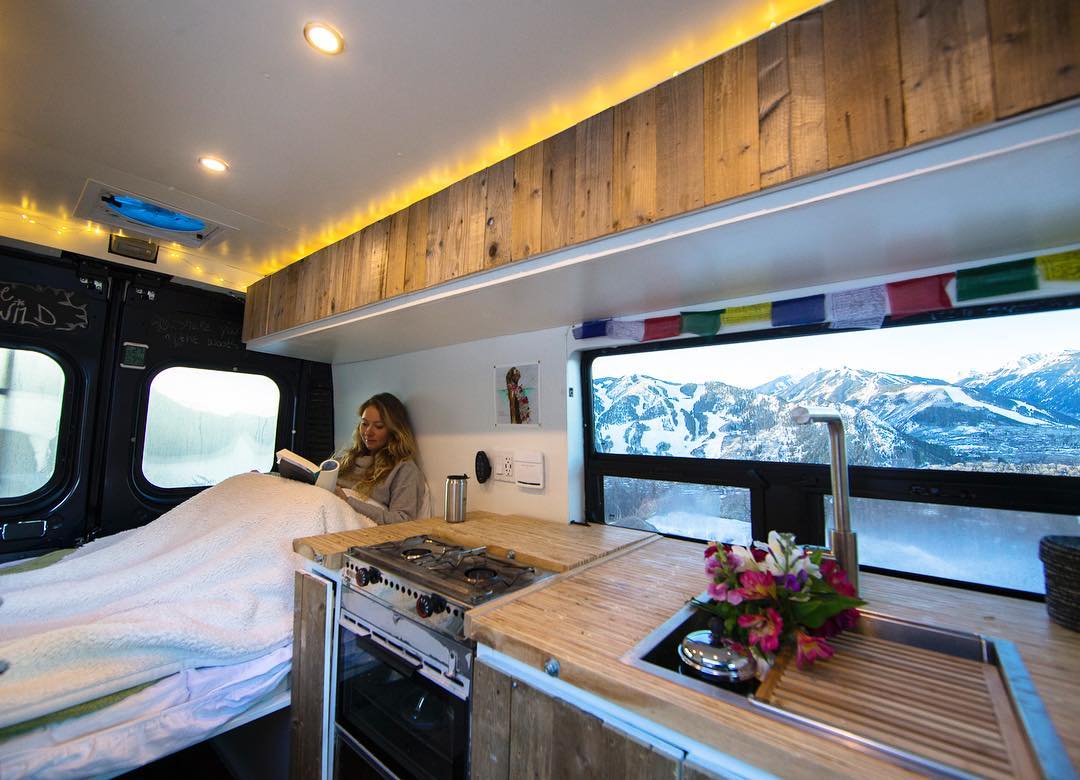
Diesel and Gas Heaters
Propex has a lot of big advantages over the Espar and Webasto heaters, but they aren’t the only option. One of the nicest things about the Espar and Webasto models is that they use fuel directly from your vehicle. This gives you the benefit of not needing to figure out how to install a separate tank, plus they’re easier to refill.
Gas and Diesel are more energy dense than propane, so they take less fuel to heat your van. Diesel is the most dense, but it’s also slightly more expensive in the US, so they end up being about the same cost per BTU. Both fuel types are about half as expensive to burn as Propane (again, this is for US prices). Depending on how often you are running your heater, this may or may not be significant in your decision.
Diesel and gas heater units are installed in much the same way as the Propex HS2000. They go inside the vehicle with an air intake and exhaust hole cut through the floor. Many people choose to install it under either the driver or passenger seat.
A fuel line will run between your heater and fuel tank. In fact, newer models of Sprinters and Transits have an extra connection built into their fuel tank specifically for attaching aftermarket fuel lines.
Disadvantages Of Diesel And Gas Heaters
Both gasoline and diesel are dirtier fuels than propane. That means there’s going to be a buildup of carbon over time. The Espar and Webasto heaters are going to require annual cleaning and maintenance to operate properly.
Not to mention – cleaning out carbon buildup is not an easy task! There are a few steps involved including uninstalling the heater, removing the combustion fan, and replacing the burner insert. All of this is going to require tools and a lot of patience.
Here is an informative video from Webasto showing how to replace your burner insert
In addition, gas and diesel have higher boiling points than propane. That means they are more finicky at higher altitudes. While the Espar and Webasto both work at high altitudes, they need to be adjusted to do so.
Furthermore, the Espar and Webasto are both noisier than the Propex, to the point that many people install a muffler.
Finally, not every model of Espar and Webasto are readily available in the US. It can be more difficult to find customer support for these brands.
| Propane | Diesel & Gas |
|---|---|
| Cleaner Fuel | Dirty - Requires Annual Maintenance |
| Quieter To Run | Louder Combustion Process |
| Hard To Carry | Easy To Store Fuel |
| Harder To Refill | Easy To Refill |
| More Expensive Fuel | Cheaper Per BTU |
| Better At High Altitude | More Temperamental At High Altitude |
| Easier To Install | Harder To Install |
| Better US Customer Support | Sparse US Customer Support |

- 24hrs. on 1 Gal.
- Nighttime noise mode
- Good Temperature Control & Diagnostics
Eberspacher Espar Airtronic D2 Air Heater
While Espar makes a number of diesel heaters, the most popular for a campervan conversion is the Airtronic D2 Air Heater.
Fuel
This particular model can run for 24 hours on just one gallon of diesel fuel which is quite impressive! This heater also features automatic temperature control and diagnostics for the best efficiency. The heater runs through four different stages of regulation, so it can be adjusted properly. In each of these stages are variations on the fan speed and fuel quantity.
Noise
The Espar has a few more fancy technical features than the Webasto. While both heaters are loud, the Espar has a nighttime operation mode that will quite it down a bit while you’re trying to sleep.
Digi-Max Controller
Most Espar models come with a Digi-Max controller included. This is a digital display with temperature readings, low voltage protection and auto-shutoff. It also records maintenance hours and troubleshooting tips. In contrast, the Webasto does not have a digital display. It uses a system of diagnostic light codes for maintenance issues.
Altitude
As stated previously, diesel (and gas) heaters don’t run as well as propane when it comes to high altitude. While there is no altitude adjustment built-in, it’s worth looking into altitude kits if you plan to spend a lot of time above 5,000ft.
The Espar has two upgrade options when it comes to high altitude:
- High altitude sensor
- High altitude pump kit
High Altitude Sensor
A high altitude sensor measures atmospheric pressure. It will automatically adjust the frequency of the metering pump every ~1000’ to improve efficiency. Once this sensor is installed, it’s hands-off. You can drive up and down the mountains all day and it will adjust the pump so you have optimum burning efficiency at all elevations.
High Altitude Pump Kit
A high altitude pump kit is less expensive, but also requires a more manual approach. With this kit, you would install a parallel fuel pump with a lower pump volume alongside your current fuel pump.
A rocker switch will allow you to select which pump the Espar uses. When you travel above ~5,000’ you would activate the low volume pump. The opposite occurs when you head to lower altitudes.
Unfortunately, the rocker switch is not that easy to get to or adjust. For the most part, you’ll probably want to leave it set to one height or the other.
A high altitude pump kit makes more sense if you plan to stay at one height for longer periods of time – or if you’re on a tighter budget. Keep in mind that it’s not damaging to the heater to be set for high-altitude and running at sea level. It will simply not be as efficient.
Newer And Older Versions Of The Espar
Current models of Espar heaters are sold with an H-kit (high altitude kit) included. This simply means that you have the option of installing either a high altitude sensor or a high altitude pump kit.
Models that were manufactured prior to 2009 do not have an H-kit included. If you happen to have an older model, you can either install a high altitude pump kit or a high altitude compensator.
A high altitude compensator is essentially the same as a high altitude sensor for models that don’t have an H-kit.
*Note: If ordering your Espar from a website like Amazon or Ebay be sure to check which model you are ordering! At the time of this post, the older models of Espar are being sold on those sites. We recommend ordering through EsparParts.com which is based in the US and has up-to-date models.
Maintenance
As stated before, the Espar will require a yearly cleaning due to carbon buildup. In addition to that, the Espar should be run for 30min – 1 hour at least once a month. If you let this heater sit for a full summer without being used, it will run dirty on startup in the fall.
Service and Reliability
Espar has distribution centers located within the US. That means if something goes wrong, you’re going to have much better luck getting it services and receiving replacement parts promptly.
Here is a good guide step-by-step guide for installing the Espar Heater
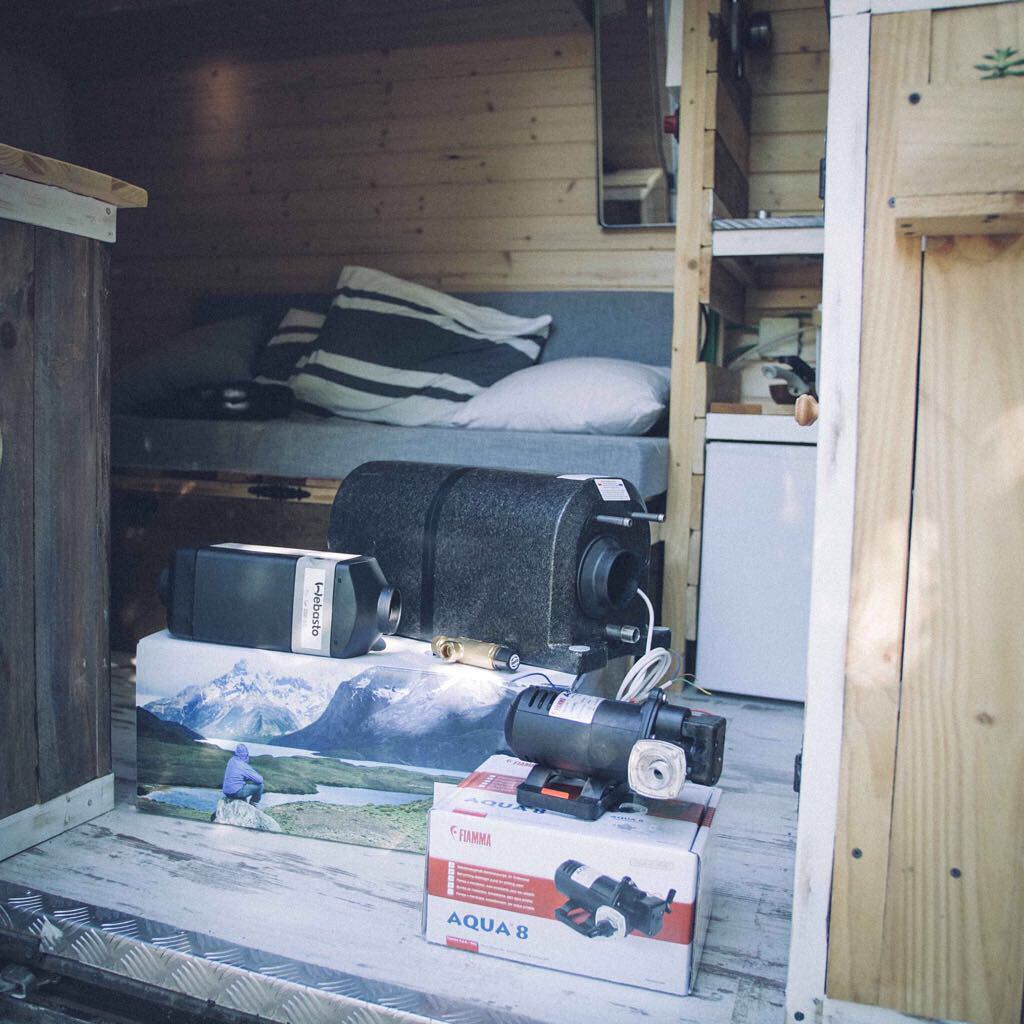
Webasto 2000 ST and STC Heaters
Webasto makes both diesel and gasoline-powered heaters. They come in two models, the 2000ST and 2000STC
These models are similar to each other, the main difference is:
- 2000ST can only burn diesel fuel
- 2000STC is not currently supported in North America
*If you live in North America and you want to buy the STC for a gasoline vehicle you will not have easy access to support, even at the dealer network.
Fuel and Maintenance
The Webasto heaters can run up to 22 hours on a single gallon of fuel. Gasoline is less energy dense than diesel. That means there will be more carbon buildup when you run the gasoline model, and therefore it will require more frequent maintenance.
Noise
Much like the Espar, the Webasto heaters are loud. Luckily, you can install a noise silencer which is not currently an option with the Espar. Most of this noise will be directed outside of the vehicle which will disturb your neighbors more than yourself, but it is something to be aware of.
Altitude
Unlike the Espar, the Webasto doesn’t have an option for automatic altitude adjustment. If you’re frequently above about 5,000 ft, you can either purchase a rheostat or manually adjust the Webasto for high altitude by reducing the fuel supply.
A rheostat allows you to adjust the combustion fan to run at a higher speed, increasing the air/fuel ratio. If you return to sea level, the downside to this is that the heater won’t run as hot, but other than that it’s not really a problem – in fact, it’s burning cleaner which will help your maintenance schedule.
With a manual adjustment, you won’t need to purchase extra parts but it is a pretty involved process so it’s not something you would want to change back and forth. There are some instructions on how to manually adjust your unit for high altitude on the sprinter-source.com.
Fresh Air Mode
You can choose between recirculated air or fresh air mode on the Webasto heater. This can save you energy and help dehumidify the van.
Service and Reliability
Webasto has a few service centers located throughout the US.
It’s worth noting that throughout our research we’ve come across far more long term mechanical complaints about the Webasto when compared to the Espar. These can range from the fan not blowing correctly, to plugged filters or leaking fuel.
Here is a good step-by-step guide for installing a Webasto Heater
Propex vs Espar vs Webasto
Here’s a quick chart covering all of the points between the three:
| Propex | Espar | Webasto |
|---|---|---|
| Propane | Diesel | Gas or Diesel |
| 3hrs. per 1lb. | 24hrs. on 1 Gal. | 2hrs. on 1 Gal. |
| Quietest | Nighttime Noise Mode | Noise Silencer Sold Separately |
| No Altitude Sensor Necessary | Altitude Sensor Sold Separately | Altitude Adjustment At Dealer Level |
| Simple Design | Better Temperature Control & Diagnostics | Diagnostic Codes |
| No Maintenance Required | Maintenance Required | Maintenance Required |
| PropexHeatSource.com | EsparParts.com | Ebay.com |
Wrapping It Up
In our opinion, a Propex heater should be the top of the list when looking at heaters. It can be incorporated into a full propane system into your vehicle. The lack of maintenance and more versatile performance are very appealing and cannot be understated.
There are two major factors that might lead you to choose a gas or diesel heater:
- If you don’t plan on using propane anywhere else in the build, it is a lot of effort to install a big tank just for a heater.
- If you will be running the heater for a significant amount of time, then propane will get costly and less autonomous due to its lower energy density.
If you are going with diesel heaters, the Espar heater tends to have better support if you’re in the US and anecdotally we’ve seen less complaints about maintenance overall. In addition, we think it is well worth considering a high altitude sensor for a cleaner and more efficient combustion to go with the Espar.

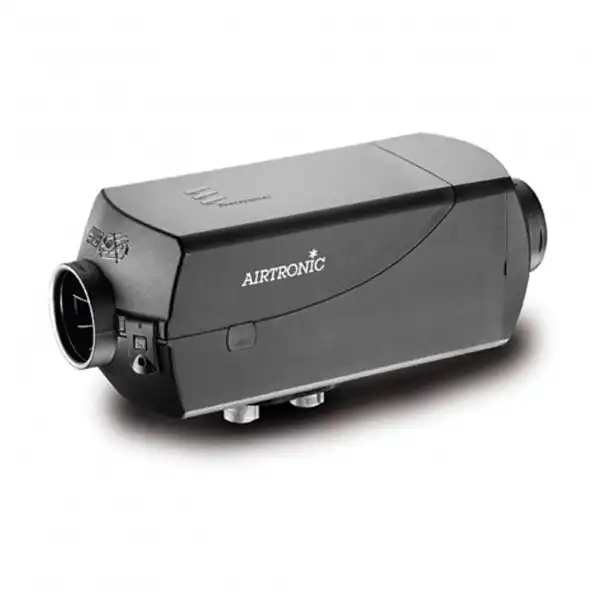
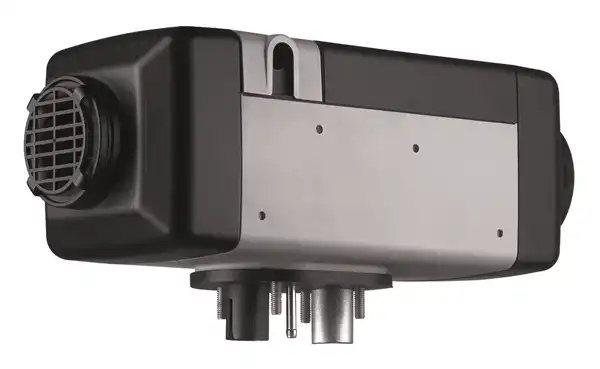
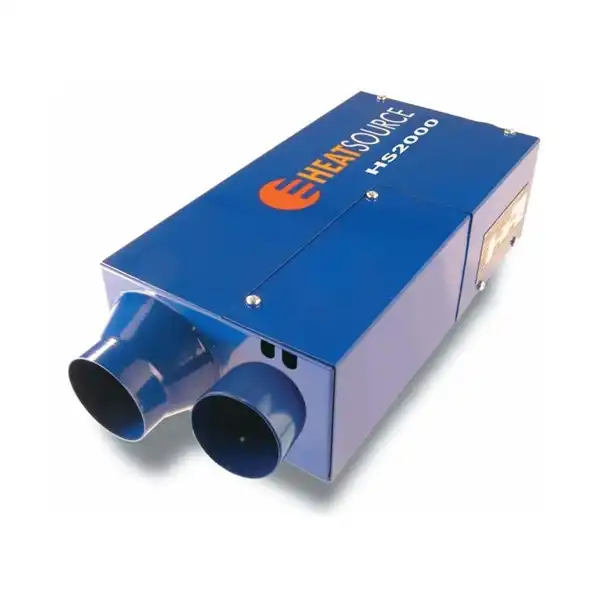
Please change your link for purchasing Propex heaters. The ebay link you provide is a company selling illegally into the USA and these units are NOT warrantied or supported in the USA. This company and others selling on ebay have been repeatedly warned against these practices. All USA dealers and distribution is listed here: propexheatsource.com
This is trouble you are causing ME personally as I am the warranty center + distributor for all of the USA market.
Thank you in advance for your attention to this matter.
Hey Karl, thanks for the feedback! We were not aware of the issues with ebay and have updated all of the propex links to point to the US dealer network.
Same thing with the Webasto Heaters and add ons.
Thank you! This was just the read I needed to confirm we need the Propex for our van conversion!
Hi. Thanks for the comparisons. There does appear to be an Espar Airtonic M2 B4L gas model available in the US. Any experience or chance of updating the guide to include?
https://www.eberspaecher.com/en/products/fuel-operated-heaters/product-portfolio/air-heaters/new-airtronic-s2m2.html
I have a 2017 Ford Transit 350 mid roof. I don’t know how you can mount it under the seat because the battery is under the drivers seat. I guess it could be mounted under the passenger seat where the jack is located. I like the idea of the propane heater so that’s the one I would get. Thanks for the information.
As a truck driver and user of many diesel heaters (air or liquid heat exchanger), if I had the choice for a heater I would definitely pick a gas/propane heater! As is in almost all trucks there are only webasto or other diesel heaters! Why is propane/LPG more expensive in US is a mystery to me,since US has cheap fracking gas. But anywhere else in the world(especially Europe )LPG is about half the price of diesel or gasoline! And I do have a big 90 liters LPG tank in my car! Wouldn’t ever trade it for a diesel “thing”! Nice article anyway!
I personally have the Propex HS2800, which I really like. The only problem I have is when it gets cold (-15 C). I just can’t empty a 20lbs (6lbs at -15 and less as it’s get colder).
I think the solution would be to insulate the gas line, and have the bottle installed in a sealed vented box INSIDE the van.
But it’s an amazing heater, and extremely safe to use.
I have a Propex heater in my 2017 4×4 Sprinter. Had a Webasto in my last rig. I’ll never go back to a Diesel heater.
why wouldn’t you go back to diesel?
Based on what I’ve seen on other peoples vans, the hugest difference between the propex vs the gas /diesel heaters is that the propex does not have a variable output like the others do. It’s either Off or On at full blast(nothing inbetween), so in the shoulder seasons you have to listen to it cycle on and off all night. The esbar/webasto automatically adjust their output level so they can run continually and smoothly all night. Somebody please correct me if I’m wrong but I just can’t find a propane heater with a modulated output…
That’s the way they all work, a gas furnace in your house doesn’t run continuous either, they run when the thermostat calls for on or off. It’s very tough to regulate gas flow in that way because it’s pressurized vs. Being pumped like the diesel or gasoline.
I have a diesel motorhome which also has a large inboard propane tank so can accommodate both/either heater types. I installed a small diesel heater that has now taken the place of my propane furnace. My diesel heater running continuously on low is much quieter than my propane heater cycling on/off constantly. This low continuous running provides a very comfortable and warm sleeping environment (I’m a light sleeper) and It also burns less fuel and it’s simple to top off every few days when I fill up the diesel tank. My diesel heater also draws less battery power than my propane furnace when dry camping, but it does take a bit longer to warm things up. The trade offs are well documented, but I love my diesel heater and have my propane heater collecting dust.
Hey All,
While this is a decent analysis, it appears to definitely be skewed to favor the far less beneficial propex. Not a hater but is somebody getting paid or sponsored here??
The Propex in no way compares to the efficiency and effectiveness of the Espar (and Webasto for that matter) The Espar uses .1 Liter (think .1 quarts) of fuel per hour on low speed. Run it for 10 hours and that is about $1, even at California prices!!
The Espar has a variable speed fan and will run on high speed for 15 minutes or so then will ramp all the way down to low and is absolutely silent. I sometimes actually go and put my hand in front of it to make sure it is on. When temps drop again it will slightly increase speed until desired temp is reached. Ultra quiet.
Also uses next to nothing in terms of electricity: 8 Watts on Low / 22 on High. That´s nothing!! Propex?
Maintenance kit costs $25 and a handy DIYer can do it in a couple of hours.
We are all about the environment but unless your van is running off of propane or is electric it is a completely incorrect moot point. Driving an efficient diesel will save way more greenhouse gasses than a gasoline version.
So, who wants to have to have to hassle with a separate fuel tank just to stay warm? Where are you going to put that big old ticking time bomb? And at 3 hours per Lb of fuel, you would spend more time in fuel driving around in the middle of nowhere and trying to find a place to fill up your propane tank every few days!! (and burn more greenhouse gasses to boot)
Espar has both diesel and gasoline models available for the US. So if you drive either a diesel or gasoline rig, do yourself, your piece of mind, your wallet and the earth a favor and get one of these things. It is indeed a game changer for #vanlife.
*Am in no way sponsored, paid, nor affiliated with any brand of anything. Just want to see folks get good info and advice.
Keep the shiny side up… and the dirty side down ;-]
Hey Mike! This post was not sponsored, although there are affiliate links included. Perhaps one of the reasons I like Propex is because we have a gasoline van and cook with propane. Many of our readers do as well.
I do agree that the Webasto or Espar make better choices if you’re driving a diesel vehicle. They are definitely more fuel-efficient which I may need to put more emphasis on.
Admittedly, this article has not been updated since it was written in 2018. One of my biggest drawbacks at that time was that Webasto did not have dealers that would install the air heaters in the US. The STC (gasoline) model was also not supported or sold in North America which made it difficult to recommend.
Since 2018, it looks like Webasto has expanded its network and both models are now supported and have installers in the US. As someone else in the comments pointed out, it looks like Espar makes a gasoline version (Airtonic M2 B4L) that is available now as well. Both of those points make a big difference and I’ll have to go through and update the article.
We appreciate (and welcome) the feedback! You bring up some good points to think about and there are a few sections I’ll need to re-write soon.
I hope that clears up some of my thoughts, happy travels!
Fun article to read but I agree with Mike J. that the article is a tiny bit skewed towards the propex heating system. What can say is that I have much experience with both the Espar and the Webasto. Both of which I have been completely satisfied with and neither of which has every let me down. Our company, The Vansmith, is currently only installing the Webasto heater systems but honestly both the Espar and Webasto are pretty much the same thing as ‘Chevrolet vs. GMC’.
Webasto service in the lower 48 (United States). There are plenty of locations to have your Webasto either serviced or installed. In fact, our company, is listed as a certified webasto maintenance location….yep, right here in good ol Colorado you can have your webasto heater installed and maintained. And for the record I’ve had my heater in my current van for 2.5 years and have NEVER had it maintained as it has never required a maintenance/service appointment. *Note- Just before I shut it down, I do run my heater on high for 10-15 minutes every time I used it….this helps prevent the buildup of carbon inside the burning chamber. I hope this helps all trying to decide which heater they would like to purchase. Be Well!
Great write up plus many thoughtful comments regarding pros, cons and personal experience. Thanks all !
Have a Propex hs2000 in our trailer . At 600 ft it ignites we have heat, camped at 6700 ft , no ignition, could hear clicking, , no heat, came back to 600 ft, ignited right up. Can someone suggest a fix to this problem? Regulator adjustment? Thanks.
Buy the duel stage propane regulator van cafe sells
Great information. I am thinking about replacing my truck camper furnace with a propex. Can you tell me how much DC power the Propex heater uses and is it less than a traditional camper furnace with the fan?
I will spend a lot of time parked at 8-10,000′ elevation/2,400-3,000 meters. Also will be operating with low temperatures of 10 degrees F/ -12 C. Will I regret heating with gas or diesel Espar? Thanks
Would be very beneficial if the publication date was listed at the start of the article. Had to read all the way through the article and comments to find out this was an outdated article.
This article states the Propex propane heaters have a burn rate of 65,000 BTU. Is there an extra 0 in that spec? My home furnace is 60,000 BTU. Maybe 6,500 BTU was meant? Their data sheet says 6824 BTU or 2 kW input. What is its efficiency, i.e. how much of that ends up as output heat? For a sense of how much heat that is, a small 110V ceramic style heater outputs 1.5 kW.
Gas furnaces are actually capable of modulating or varying their gas consumption with a variable flow gas valve. Maybe not down to near zero (50% perhaps). That combined with variable flow fans means even temperatures vs the swings from the heater blasting on full for some time then not coming back on until the temperature has dropped several degrees. Nice to read these diesel heaters function in that manner.
There are now multifuel heaters that are available which use something close to kerosene as a fuel. Does anybody know anything about these?
Acquiring LPG is a major pain, especially if you travel outside your home country (which I hope you do). Using the same fuel as your vehicle (petrol or diesel) makes your life so much easier/lighter/simpler, and that is one of the attractions of living on the road. Todays diesel heaters, especially with a muffler and/or rubber mount for the pump, are extremely quiet.
I forgot to mention that the new Webastos go through a cycle that limits the carbon build up that you mentioned.
Is the diesel heater something that can be used in place of an onboard propane furnace? I have a Lance Trailer (25,000 BTU) that I am using in -20 C weather full time that goes through 150 lbs of propane every 3 days. I was wondering if I could retrofit a Diesel heater in its place and hook it up to the onboard forced air system?
Thank you Tim H for letting me know it is not accurate. I am trying to design a van and almost ruled out Webasto when I read gasoline not supported in the US.
With so much information on the internet it is difficult to wade through it all, and not to mention keep it up to date. I would prefer a gasoline heater so as not to hassle carrying other fuel types. Any solid advice on the latest gasoline heaters? I’ve had a van on order for 5 months, taking the chance it is ever delivered I should be ordering my equipment now as supply chains are slow.
5 dB is actually quite a bit. It’s on a log scale. For example, a 3 dB difference is twice as loud.